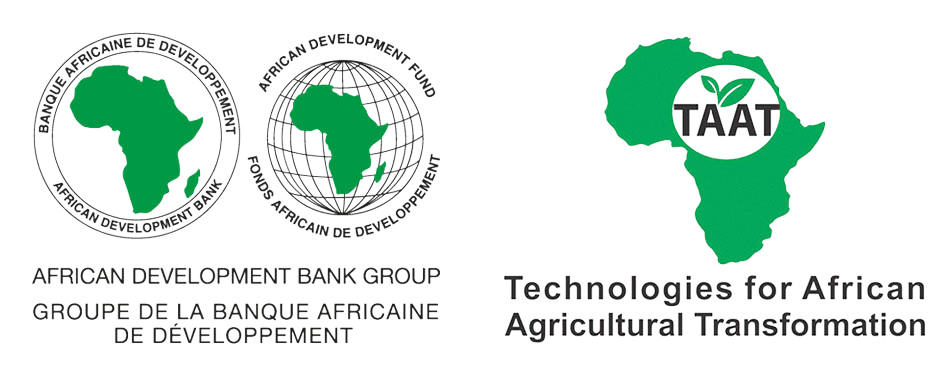The Maize Compact’s Technology Toolkits
This Maize Compact is led by the African Agricultural Technology Foundation (AATF) and IITA with partnerships in 12 countries located in Sub-humid climates of Central, East, Southern and West Africa. This effort is driven by the availability of three recently-developed traits; drought tolerance, imazapyr resistance, and Vitamin A biofortification. Drought tolerance mitigates risk of climate change, imazapyr resistance reduces the threat of the striga plant parasite and biofortification contributes to nutritional security. Varieties championed by AATF are promoted by the TEGO licensing mechanism and these and other improved varieties and hybrids are becoming widely marketed through commercial seed suppliers.
Land preparation is advanced through contract mechanization, such as the award winning Hello Tractor initiative, and increased availability of hand tractors. Integrated Soil Fertility Management incorporates pre-plant fertilizer blends, nitrogen top dressing, crop residue and manure management, and legume rotation and intercropping strategies.
Drought Tolerant Maize for Africa (DTMA) signals a breakthrough in water management for maize cropping and is best accompanied by water conservation features such as tie ridges and contour cropping. Weeds are better managed through the use of pre-emergent herbicides, including those suitable for maize-legume intercrops. Parasitic striga can finally be eliminated from maize croplands using a combination of technologies including Strigaway maize varieties.
The recent invasion of Africa by the Fall Army Worm (FAW) may also be controlled through IPM and rapid response, and is the focus of another TAAT Compact. Additionally, varieties are identified that offer tolerance to Maize Lethal Necrosis Virus. Aflatoxins are reduced through the application of AflaSafe, a technology that introduces nontoxic fungi to eliminate toxicogenic ones and greatly improves food safety where applicable. Postharvest labor is greatly reduced through mechanical and motorized shellers that remove grain from cobs. Maize is a major component of processed animal feeds and this deepens maize markets to accommodate anticipated surpluses. Stover is also valuable as livestock feed. Improved maize production offsets grain importation, and cereal banking assists in protecting prices during peak supply.

